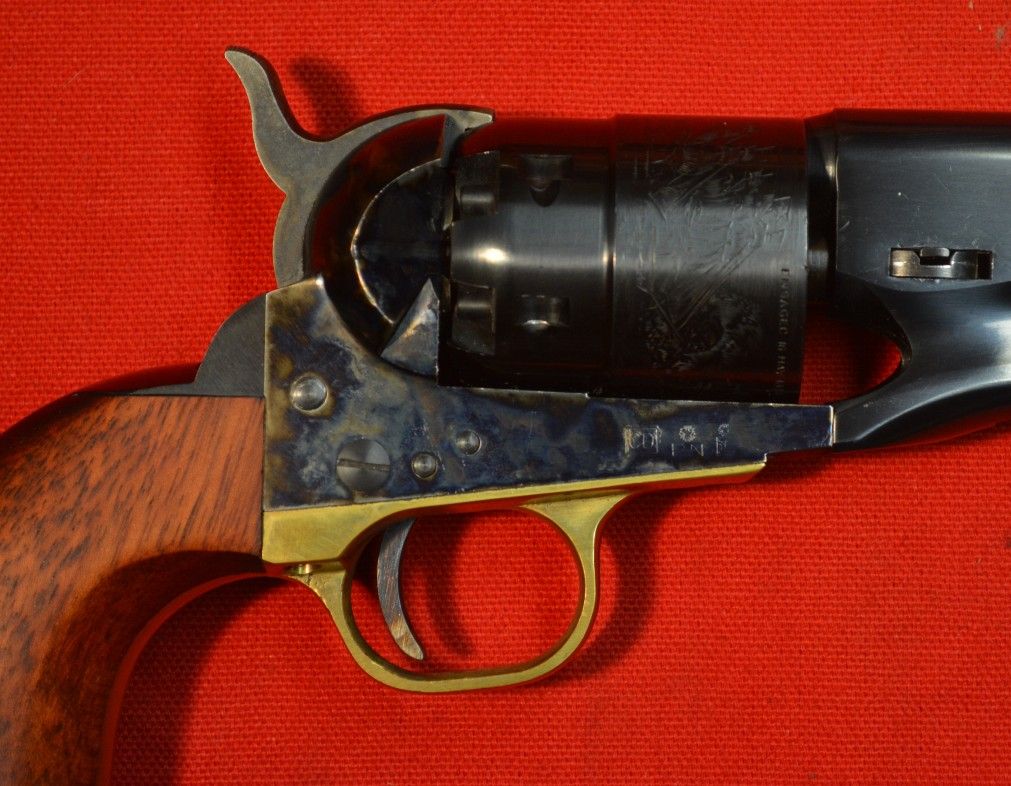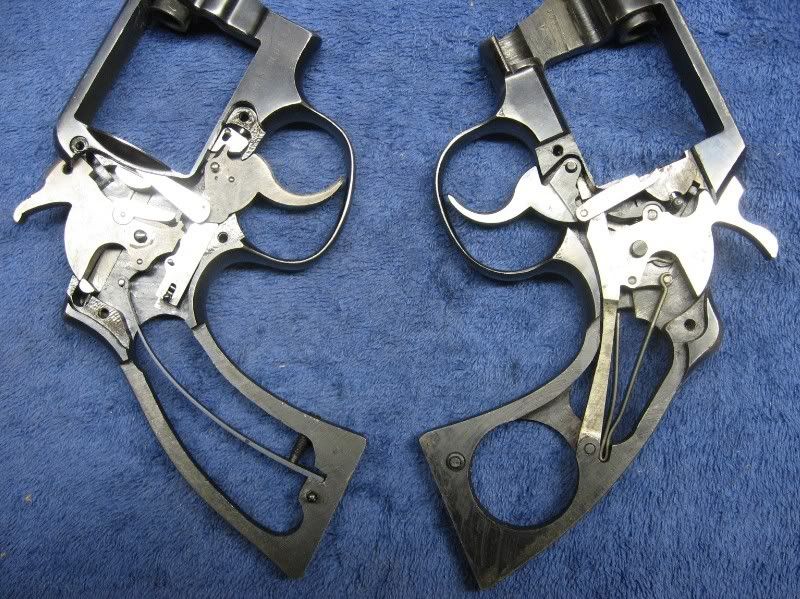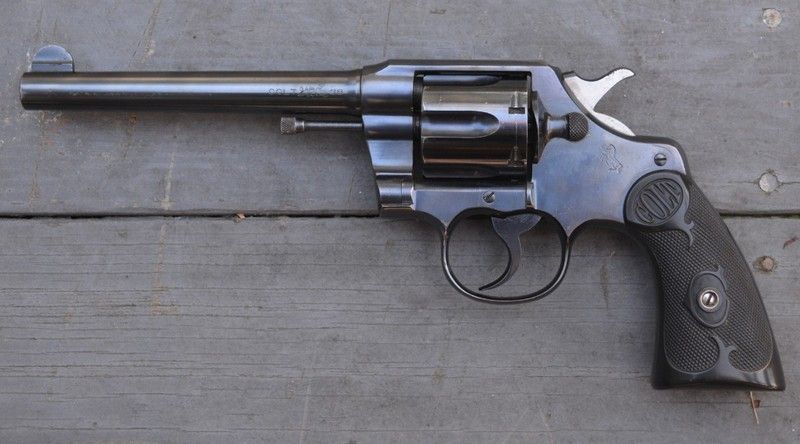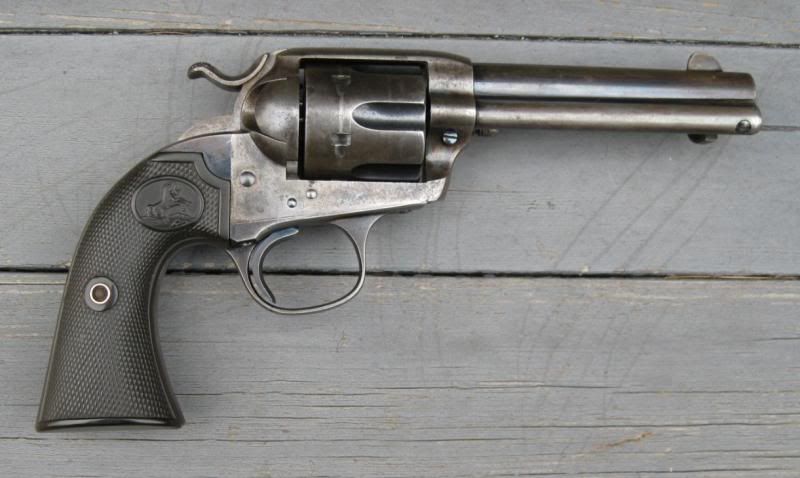Howdy
First of all, we need a definition of which way you are looking at the cylinder to define which way it revolves. Most generally agree that left and right, as well as cylinder rotation are defined by looking at the gun from the rear, or the shooter's perspective.
After we agree on that, we can agree that double action Colts rotate clockwise and double action Smith and Wessons rotate counter clockwise. (or anti-clockwise as the Brits say)
It has to do with how the revolvers are built.
On the left in this photo is a S&W 38 MIlitary and Police, on the right is a Colt, probably an Army Special, I don't exactly remember right now. It does not matter, this pair of revolvers are typical of all the double action revolvers made by these companies. The side plates have been removed so the mechanisms can be observed.
The most obvious differnece is that Smiths have their side plates on the right side and Colts have their side plates on the left side. That's just the way they are. Looking inside the guns, we should be able to identify the hand (or pawl, depending on the maker). This is the part that shoves the cylinder around. The hand rotates off the trigger, and it pretty much has to be at the uppermost level of the assembly. It would be a real pain in the butt to assemble a double action revolver that had the hand buried at the bottom of the lockwork. The hand is on the right side of the frame in the Smith, and on the left side of the frame in the Colt. So that is why the hand of the Smith pushes the cylinder around counterclockwise when viewed from behind, and the Colt hand pushes the cylinder around clockwise when viewed from the rear.
Colts usually did not have any sort of latch for the cylinder ejector rod at the front of the cylinder, the cylinder only latched into the frame at the rear.
Smiths have always (except for the 38 M&P Model of 1899, the 32 Hand Ejector Model of 1896, and maybe some modern models that I am not familiar with) had a latch slung under the barrel to latch the front of the cylinder rod in place.
When I started shooting there was a debate raging in all the gun magazines that the Colt system was better because the cylinder rotated 'into' the frame while the Smith and Wesson cylinder rotated 'away' from the frame. To further back this argument up, Colt aficionados would point out that this was the reason Colts did not need to latch the cylinder at the front, the rear of the cylinder was enough. They used to say that Smiths 'needed' that latch up front to keep the cylinder secure, so it did not tend to try to force its way open as the action cycled. Colt even used to make this same argument in their advertising.
To which I say BALONEY! If a revolver is dirty enough that the direction of rotation matters when the action is cycled, then the gun needs some serious cleaning. Under normal circumstances it does not matter at all. I am just a bit more of a Smith and Wesson guy than a Colt guy, and I always thought a cylinder ejector rod hanging out in space was asking to be bent if it got accidentally whacked. Of course some Colts had an under lug which afforded protection to the extractor rod.
Rugers do not have a side plate, the action comes out of the gun as a unit when the trigger guard is lowered out of the frame. So Ruger had the choice when designing their revolvers about which way the cylinder would revolve. They chose to rotated it counterclockwise when viewed from the rear, and although this GP 100 has an under barrel lug to protect the ejector rod, the cylinder latches to the frame at both the rear of the cylinder and the yoke. By the way, I just checked the Ruger website, and they claim the cylinder is 'triple locked' in place, but they are including the bolt, which pops up and latches the cylinder in battery. By that definition, the old S&W Triple Lock would have been said to latch the cylinder in four places.

Let's look at single action revolvers now. Cartridge single action revolvers pretty much follow the precedents set by their percussion predecessors. The hand was on the left side of the frame, so it pushed the cylinder clockwise when viewed from the rear. Colts and Remingtons had the recess for putting a cap on the nipples on the right side. This is not a Colt, it is a Pietta replica of a Colt 1860 Army. But you get the idea. And let's shoot down the old myth about Sam Colt being left handed right now. The old myth that he thought it was better to load the revolver when holding it in the left hand. Like most mass production products, revolvers were designed for the majority of the public, which has always been right handed. It only makes sense that the average person had better fine muscle control of his right hand for precision acts such as placing a percussion cap on the nipples of a C&B revolver. I don't know if that holds much historical evidence, but it makes a lot more sense to me than guessing that Sam Colt was left handed. We will never know.

When Colt and Remington transitioned to making cartridge revolvers, the mechanisms were not radically different. It made the most engineering sense to keep the hand where it was in the C&B models, keeping the cylinder rotating clockwise when viewed from the rear, and the loading gate was placed where the cap loading recess had been.
Interestingly enough, the old Top Break revolvers made by Smith and Wesson in the 19th and early 20th Centuries had their side plates on the left side, and the cylinders rotated clockwise when viewed from the rear. The opposite of modern Smiths. I would show a photo, but this board only allows a maximum of six photos per posting.






